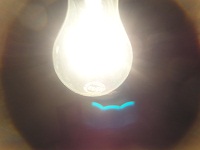UVC Lights for Disinfection: A Game-Changer in the Fight Against Microbial Contamination
In recent years, the importance of disinfection has become increasingly apparent. With the rise of antibiotic-resistant bacteria and the ongoing COVID-19 pandemic, it’s more crucial than ever to find effective ways to eliminate microbial contaminants. One technology that has gained significant attention in this regard is UVC light disinfection. In this article, we’ll delve into the world of UVC lights, exploring their science, benefits, and applications.
Understanding UVC Light Disinfection
UVC light disinfection is a process that utilizes ultraviolet C light, a type of electromagnetic radiation, to kill or inactivate microorganisms such as bacteria, viruses, and fungi. The technology is based on the principle that UVC light is lethal to microorganisms, as it damages their DNA and prevents them from reproducing. This method is particularly effective against microorganisms that are resistant to traditional disinfection methods, such as antibiotics and chemical disinfectants.
The Science Behind UVC Light Disinfection
The science behind UVC light disinfection is rooted in the concept of photobiology, which studies the effects of light on living organisms. When UVC light is applied to microorganisms, it penetrates the cell membrane and interacts with the DNA, causing damage to the genetic material. This damage prevents the microorganisms from replicating, effectively killing them. The effectiveness of UVC light disinfection is dependent on several factors, including the intensity and duration of the UVC light exposure, as well as the type and concentration of microorganisms present.
Benefits of UVC Light Disinfection
UVC light disinfection offers several benefits over traditional disinfection methods. One of the most significant advantages is its ability to target specific microorganisms, reducing the risk of resistance development. Additionally, UVC light disinfection is a chemical-free and non-toxic process, making it an attractive option for environments where chemical residues are a concern. Furthermore, UVC light disinfection is a rapid process, typically taking only a few minutes to achieve effective disinfection.
Applications of UVC Light Disinfection
UVC light disinfection has a wide range of applications across various industries. In healthcare settings, UVC light disinfection is used to disinfect patient rooms, operating rooms, and medical equipment. In food processing, UVC light disinfection is used to sanitize surfaces and equipment, reducing the risk of contamination and foodborne illness. In public spaces, UVC light disinfection is used to disinfect high-touch areas, such as doorknobs, light switches, and countertops.
Types of UVC Light Disinfection Systems
There are several types of UVC light disinfection systems available, each designed for specific applications. One common type is the UVC light fixture, which is a ceiling-mounted or wall-mounted device that emits UVC light. Another type is the UVC light wand, which is a handheld device that can be used to disinfect specific areas or objects. There are also UVC light disinfection systems specifically designed for use in water treatment, air purification, and surface disinfection.
Challenges and Limitations of UVC Light Disinfection
While UVC light disinfection is a highly effective method, it’s not without its challenges and limitations. One of the main limitations is the need for precise control over the UVC light intensity and duration to ensure effective disinfection. Additionally, UVC light disinfection may not be effective against all types of microorganisms, such as those that are resistant to UVC light or those that are present in biofilms. Furthermore, UVC light disinfection may not be suitable for all surfaces or materials, as it can cause damage or discoloration.
Future Directions in UVC Light Disinfection
As the demand for effective disinfection methods continues to grow, researchers and manufacturers are working to improve and expand the capabilities of UVC light disinfection. One area of focus is the development of more portable and affordable UVC light disinfection systems, making it easier for individuals and organizations to implement this technology. Another area of focus is the development of UVC light disinfection systems that can be integrated into existing infrastructure, such as HVAC systems and water treatment plants.
Conclusion
UVC light disinfection is a powerful tool in the fight against microbial contamination. By understanding the science behind UVC light disinfection, its benefits, and its applications, we can better appreciate the importance of this technology in maintaining public health and preventing the spread of disease. As the demand for effective disinfection methods continues to grow, it’s likely that UVC light disinfection will play an increasingly important role in our efforts to combat microbial contamination.
